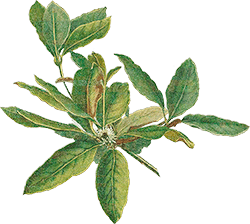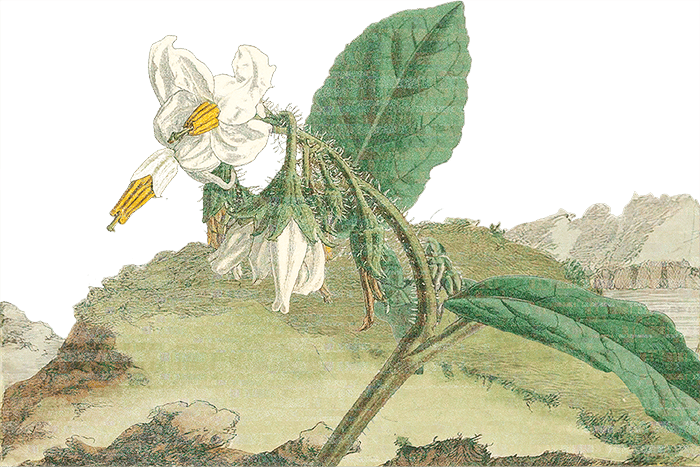Pariette Cactus
Thursday, January 30, 2025
Pariette Cactus :: Sclerocactus brevispinus
Bad at Goodbyes :: Episode 020
On today’s show we learn about the Pariette Cactus, a critically endangered cactus native to Western North America, specifically Utah in the United States.
- (00:05) Intro
- (02:05) Species Information
- (21:07) Citations
- (22:42) Music
- (29:57) Pledge
Research for today’s show was compiled from
- Aliso: A Journal of Systematic and Floristic Botany Volume 30 Issue 2 – https://scholarship.claremont.edu/aliso/vol30/
- Center for Plant Conservation – https://saveplants.org/plant-profile/?CPCNum=44462
- IUCN – https://www.iucnredlist.org/species/181378/1726149
- U.S. Fish & Wildlife Service – https://www.fws.gov/species/pariette-cactus-sclerocactus-brevispinus
- Utah Ecological Services Field Office – https://ecos.fws.gov/docs/recovery_plan/Pariette%20Cactus_Recovery%20Outline_Apr%202010.pdf
- Western North American Naturalist vol 70 issue 3 – https://doi.org/10.3398/064.070.0310
- Wikipedia – https://en.wikipedia.org/wiki/Sclerocactus_brevispinus
Please find us on the web at Bad at Goodbyes and on instagram. Please subscribe and rate/review Bad at Goodbyes wherever you listen to podcasts. Please help spread the word about the show and about the species we feature. Please take care of each other, and all of our fellow travelers.
A note on accuracy: I strive for it! These episodes are well-researched and built from scholarly sources, hoping to provide an informed and accurate portrait of these species. That said, I’m an ambient musician! I am not an academic and have limited scientific background. I may get things wrong! If you are using this podcast for scholarship of any kind, please see the cited sources and double-check all information.
Rough Transcript
Intro 00:05
Welcome to Bad at Goodbyes.
On today’s show we consider the Pariette Cactus
Species Information 02:05
The Pariette Cactus is a critically endangered cactus native to Western North America, specifically Utah in the United States.
Description
The Pariette Cactus is a very small, squat, barrel-shaped cactus typically reaching heights of 1 to 4 inches with a diameter of 1 to 3 inches, roughly the size of a human fist. The body is predominantly green with a dense covering of white-ish spines.
The main body of the cactus is called the stem. It’s thick and fleshy, and is a reservoir for storing water. Its green color results from the presence of chlorophyll. Chlorophyll’s role in photosynthesis is to absorb light energy, primarily the reds and blues of the spectrum, while reflecting green, which is why plants appear green. This absorbed light energy drives a series of chemical reactions converting water and carbon dioxide into glucose (a food sugar) and oxygen.
The surface of the stem of the Pariette Cactus is covered in a waxy protective layer, called the cuticle. It’s composed primarily of cutin, a mixture of waxes and fatty acids, which acts as a barrier, reducing water loss through transpiration. The cutin seals the stem, preventing the escape of water vapor through the stem’s tiny pores (called stomata), which are used for carbon dioxide intake.
Additionally, the cuticle has some reflective properties, helping to deflect intense sunlight, reducing the temperature of the stem and further minimizing water loss. It also serves as a physical barrier against pathogens, insects, and other potential threats.
The stem of the Pariette Cactus is further divided into vertical ribs, which provide structural support and increase the plant’s surface area for photosynthesis. The ribs also allow the cactus to expand and contract as it absorbs water.
Small, wooly raised structures called areoles are located along the ribs. These are in fact the cactus’ branches, a specialized growing point for the spines, and flowers.
The spines, then, are specialized leaves adapted to protect the cactus from herbivores, and also play a role in reducing water loss by creating a microclimate around the stem trapping moisture from fog, and providing an additional surface to collect dew or light rain. The dense cover of spines also provides some shade for the stem, reducing exposure to intense sunlight and helping to prevent overheating.
The spines are arranged in clusters, radiating outwards from the areoles. Each cluster contains roughly 1 to 3 central spines, projecting outward from the center of the aerole measuring less than a quarter inch in length. These spines are hooked, like say a fish-hook, that can snag in skin or fur, as an additional defense. The central spines are encircled by 5 to 13 quarter to half inch radial spines, which grow from the outside edge of the areole and lie flat against the body of the cactus.
In the springtime, roughly in April and May, some aeroles at the top of the Pariette Cactus produce flowers. These flowers are purple-ish pink and bell shaped, roughly a half inch tall and an inch wide. The flowers are like the size of your thumbnail. Also they are super pretty. I encourage you to look up pics!
Reproduction
The flowers contain both the male reproductive organs, the pollen-bearing stamen and the female reproductive organs, the pistil which contains the ovary. Pollinators, like the southern bronze furrow bee, and perhaps ants and beetles are attracted to the flowers’ bright colors, seeking the sweet nectar within. As they move from flower to flower collecting nectar, they inadvertently transfer pollen grains from the stamens of one flower to the stigma (the top receptive part of the pistil) of another.
If a pollen grain is compatible with the pistil it lands on, it grows a pollen tube down the pistil to reach the ovary. Within the ovary, the pollen fertilizes the ovules (the eggs), leading to the formation of seeds.
The fertilized ovary develops into a fruit, which are dry, less than a half-inch in diameter and shaped like short cylinders. They are green, tan, or sometimes a bit pinkish. The fruits have small, thin, dry scales on them with papery edges that when ripe, split open to release the seeds. The seeds are dispersed by wind, rainfall, and gravity, falling near the parent plant. In the wild, Pariette Cactus are often found in clusters, a kind of family, with parent and offspring closeby.
If the seeds land in suitable soil with sufficient moisture, they will germinate, growing a shallow and widespread root system enabling it to more easily absorb rainwater from the surface. Once a seedling has established itself, it grows very slowly, taking anywhere from 5 to 10 years to reach reproductive maturity and produce its first flowers.
Though precise data on its lifespan is limited, it’s estimated that the Pariette Cactus can live for several decades, potentially reaching 50 years old or greater.
Habitat
The Pariette Cactus is native to the Pariette Draw, a dry, clay badlands ravine in Duchesne county Utah, on lands of the Bureau of Land Management and the Uintah and Ouray Reservation, near the Green River and roughly 100 miles from Salt Lake City.
This habitat falls within the broader Colorado Plateau bioregion, a high-elevation desert characterized by red rock canyons, mesas, clay hills, salt- and sagebrush flats, in a very arid landscape.
The Pariette Draw itself, the only place this species is found, is a stark landscape shaped by ancient erosion. A badlands carved into clay-rich soil, with networks of gullies, valleys and ravines. The Pariette Draw is one of these ravines, and the Pariette Cactus is found in only a few square miles of the Draw growing at elevations of roughly 1 mile above sea level.
This is a high desert ecosystem, with significant temperature fluctuations. Summers are scorching, with daytime highs cresting above 100 degrees. The winters are cool, with temperatures plummeting into the single digits. Annual rainfall is scarce, averaging less than 10 inches per year, with much of that precipitation in the form of brief, intense thunderstorms.
The Pariette Cactus shares its arid home with Coyote, Four-Wing Saltbush, Honey Bees, Carpenter Ants, Burrowing Owl, Darkling Beetles, Western Rattlesnake, Kit Fox, Gopher Snake, Sagebrush Lizard, Ricegrass, Prickly Pear Cactus, pronghorn, Rabbitbrush, Saltgrass, Mule Deer, Greasewood, Kangaroo Rat, Shadscale, Desert Cottontail, Red-Tailed Hawk, Pickleweed, Yucca, Black-Tailed Jackrabbit, Sage Thrasher, and many more.
In The Dream
————
In the dream, a deep rumbling, in the dream a shuddering beneath, like the ancient promise between earth and root, broken. And the new heat, and the new drought, the dust now that never seems to settle. I only want to open, to offer my legacies, my breath and sweetness. But this is a new world of unknowable dangers, of noise and theft and tremblings, and sometimes I think it best to hold my gifts close. In the dream.
————
Threats
The Pariette Cactus faces a range of threats, the most significant being oil and gas development. Its entire habitat range falls within current or proposed oil exploitation sites with over 1800 wellheads already nearby. The construction of these wells, and related infrastructure like roads, buildings and pipelines leads to habitat loss, fragmentation, and increased erosion and the dust generated from these activities can also negatively impact the cactus’s growth and mortality.
Illegal collection is also a major threat, as the cactus is highly sought after by collectors. The expansion of oil exploitation infrastructure (like roads) has inadvertently made the cactus more accessible to poachers, exacerbating this issue.
Human introduced domesticated livestock grazing is an additional albeit indirect concern. Livestock do not graze on the cactus itself, but scientist have observed trampled mature and seedling cacti. Livestock overgrazing also leads to reduced vitality throughout the ecosystem potentially affecting Pariette Cactus pollinators, like the southern bronze furrow bee.
Human induced climate change, with its potential for prolonged droughts and altered precipitation patterns, is likely to have longterm impact of the cactus. Scientists have observed that in drought conditions, to conserve water and energy the Pariette Cactus will only open their flowers for two to three days during the April bloom, which severely limits the opportunity for pollination.
Conservation
The Pariette Cactus is legally protected and much of its habitat falls under the purview of the Bureau of Land Management and under Tribal Governance of the Uintah and Ouray Reservation. Since the early 2010s those bodies, along with the US Fish and Wildlife service have implemented programs to abate the impacts of development activity, limit habitat loss, and protect surrounding pollinator habitat.
And yet, in the past decade, the Bureau of Land Management has granted at least two new leases for oil and gas exploration in the Cactus’ habitat.
The Pariette Cactus has been considered critically endangered on the IUCN Red List since 2013 and their population is currently in decline.
Most recent counts estimate that less than 30,000 Pariette Cactus remain in the wild.
Citations 21:07
Aliso: A Journal of Systematic and Floristic Botany Volume 30 Issue 2 – https://scholarship.claremont.edu/aliso/vol30/
Center for Plant Conservation – https://saveplants.org/plant-profile/?CPCNum=44462
IUCN – https://www.iucnredlist.org/species/181378/1726149
U.S. Fish & Wildlife Service – https://www.fws.gov/species/pariette-cactus-sclerocactus-brevispinus
Utah Ecological Services Field Office – https://ecos.fws.gov/docs/recovery_plan/Pariette%20Cactus_Recovery%20Outline_Apr%202010.pdf
Western North American Naturalist vol 70 issue 3 – https://doi.org/10.3398/064.070.0310
Wikipedia – https://en.wikipedia.org/wiki/Sclerocactus_brevispinus
Music 22:42
Pledge 29:57
I honor the lifeforce of the Pariette Cactus. I will carry its human name in my record. I am grateful to have shared time on our planet with this being. I lament the ways in which I and my species have harmed and diminished this species.
And so, in the name of the Pariette Cactus I pledge to reduce my consumption. And my carbon footprint. And curb my wastefulness. I pledge to acknowledge and attempt to address the costs of my actions and inactions. And I pledge to resist the harm of plant or animal kin or their habitat, by individuals, corporations, and governments.
I pledge my song to the witness and memory of all life, to a broad celebration of biodiversity, and to the total liberation of all beings.

